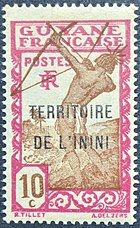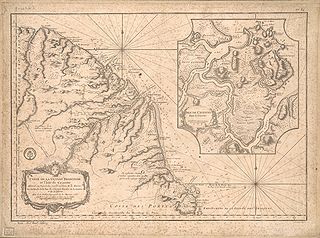
The history of French Guiana dates back to the period prior to European colonization. Prior to the arrival of the first Europeans, there was no written history in the territory. It was originally inhabited by a number of Native American peoples, among them the Kalina (Caribs), Arawak, Galibi, Palikur, Teko, Wayampi, and Wayana. The first Europeans arrived in the expeditions of Christopher Columbus, shortly before 1500.
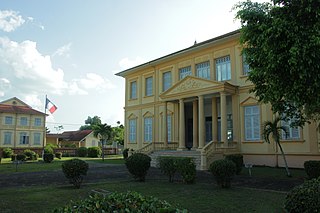
Saint-Laurent-du-Maroni is a commune of French Guiana, an overseas region and department of France located in South America. Saint-Laurent-du-Maroni is one of the three sub-prefectures of French Guiana and the seat of the Arrondissement of Saint-Laurent-du-Maroni. It is the second most populous city of French Guiana, with 50,250 inhabitants at the January 2021 census.

Saül is a commune of French Guiana, an overseas region and department of France located in South America. It is the most sparsely populated commune of French Guiana.
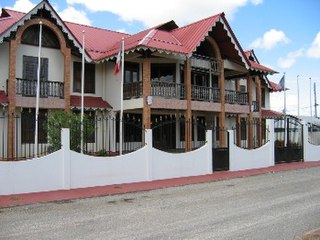
Montsinéry-Tonnegrande is a commune of French Guiana, an overseas region and department of France located in South America.
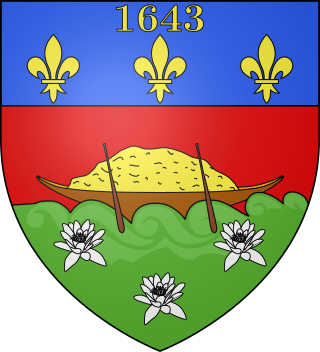
The 3 arrondissements of the Guyane department are:
- Arrondissement of Cayenne, with 10 communes. The population of the arrondissement was 177,716 in 2019.
- Arrondissement of Saint-Laurent-du-Maroni, with 8 communes. The population of the arrondissement was 96,757 in 2019.
- Arrondissement of Saint-Georges, with 4 communes. The population of the arrondissement was 7,205 in 2019. This arrondissement was created by a government decree of October 26, 2022.

The arrondissement of Cayenne is an arrondissement of France in the French Guiana department in French Guiana region. It has 10 communes. Its population is 181,520 (2020), and its area is 17,029 km2 (6,575 sq mi). It is the smallest of the three arrondissements in French Guiana, but also its most populated.

Saint-Élie is a commune of French Guiana, an overseas department and region of France in South America. In 1930, Saint-Élie became capital of the Inini territory. From 1953 onward, the commune was called Centre. In 1969, it was renamed to Saint-Élie.

Ouanary is a commune of French Guiana, an overseas region and department of France located in South America. Ouanary lies at the mouth of the river Oiapoque. Ouanary is the least populated commune of French Guiana. The settlement of Ouanary is accessible only by boat, helicopter, or light aircraft at Ouanary Airport, a 750 metres (2,460 ft) dirt runway.

Apatou is a commune in French Guiana, an overseas region and department of France in South America. Apatou is home to Maroons of the Aluku, Paramacca, Ndyuka, and Saramaka tribes.

The Inini or Grand Inini is a river in western French Guiana. It is a tributary of the Lawa, the upper course of the Maroni. The river is 215 km (134 mi) long and non-navigable. The Inini is the only major river in French Guiana which runs east to west, unlike the other major rivers which run south to north. In the beginning of the 20th century, it was the site of a gold rush, and the gold prospectors have become active in the region again since the 1990s. The Inini territory which has existed between 1930 and 1946 was named after this river.

Papaichton is a commune in the overseas region and department of French Guiana. The village lies on the shores of the Lawa River. Papaichton is served by the Maripasoula Airport.
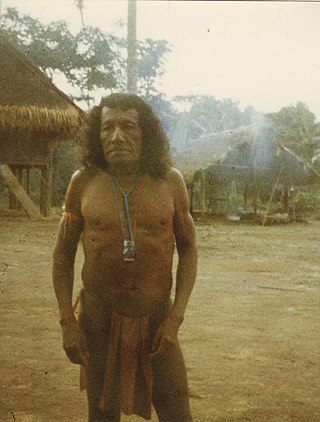
The Wayana are a Carib-speaking people located in the southeastern part of the Guiana highlands, a region divided between Brazil, Suriname, and French Guiana. In 1980, when the last census took place, the Wayana numbered some 1,500 individuals, of which 150 in Brazil, among the Apalai, 400 in Suriname, and 1,000 in French Guiana, along the Maroni River. About half of them still speak their original language.

Articles related to the French overseas department of Guiana(Région Guyane) include:

French Guiana is an overseas department and region of France located on the northern coast of South America in the Guianas and the West Indies. Bordered by Suriname to the west and Brazil to the east and south, French Guiana covers a total area of 84,000 km2 (32,000 sq mi) and a land area of 83,534 km2 (32,253 sq mi), and is inhabited by 295,385 people.
A by-election was held in French Guiana's 2nd constituency on 4 March 2018, with a second round on 11 March as no candidate secured a majority of votes in the first round. The by-election was called after the Constitutional Council invalidated the election of Lénaïck Adam, candidate of La République En Marche! (REM), in the June 2017 legislative elections on 8 December 2017.
The COVID-19 pandemic was confirmed to have reached the French overseas department and region of French Guiana. The first five cases were found on 4 March and the first death was announced on 20 April 2020. On 30 April, the territory was green listed, because the pandemic appeared to be under control except for Saint-Georges. In June, the virus started circulating all over the territory.
Charvein is a village in the Mana commune of Saint-Laurent-du-Maroni in French Guiana. Charvein was the location of Camp Charvein, one of the most notorious camps of the Prison of St-Laurent-du-Maroni. From 1989 until 1992, Charvein was the location of a Surinamese refugee camp.

Prison of the Annamites is a former prison in the commune of Montsinéry-Tonnegrande in French Guiana. The prison was built for Annamite prisoners who had revolted against French rule. The purpose of the prison was to develop the Inini territory. The prison was in operation between 1931 and 1944.

The history of Suriname during World War II was mainly focused on protecting the bauxite industry and guarding the borders with French Guiana which was part of Vichy France. From November 1941 onwards, 2,000 American troops were stationed in Suriname who transformed Airstrip Zanderij into a major airport, and constructed defensive works. No actual battles took place in Suriname. There was a political crisis in 1943, because Governor Johannes Kielstra used the state of emergency to imprison political opponents.

In French history, bagne is a term used to describe a penal establishment where forced labor was enforced. These establishments were typically in penal colonies or galleys where there were the port bagnes. Not all convicts in the penal system were sentenced to forced labor.



